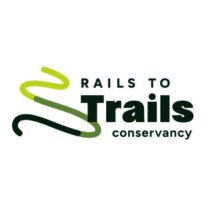National Roadway Safety Strategy Marks A Critical Turning Point

Last month’s long-awaited unveiling of the U.S. Department of Transportation’s (USDOT’s) National Roadway Safety Strategy marks a critical turning point in how we address the tragic rate of serious injuries and deaths that take place on our nation’s road network.
In declaring traffic deaths a “crisis on our roadways,” USDOT is digging in on its mission to ensure the United States has the safest transportation system in the world, acknowledging the growing and outsized impact of traffic deaths on those who cannot or choose not to drive. By positioning these traffic fatalities as preventable, the agency has established that the problem of traffic fatalities is solvable.
While laying out its plan to achieve its goal of achieving zero traffic fatalities, USDOT takes another critically important step. Its strategy brings into sharp focus the disproportionate impact of traffic injuries and fatalities on Communities of Color and low-income communities, especially among pedestrians and bicyclists. For the first time, the agency is adopting a specific equity focus as part of its effort to address safety—calling on all actors in our transportation system to work to address these historic and ongoing inequities. At the same time, it highlights the role of establishing safe, convenient access to transit and active transportation in reducing greenhouse gas emissions. For more people to select climate-friendly transportation options, we need road and street systems that feel safe for all road users.
USDOT’s new strategy outlines a Safe System Approach, shifting the focus of safety efforts to provide a greater emphasis on how transportation systems and communities are designed and engineered to reduce the likelihood of crashes. When crashes do occur, the agency’s strategy focuses on reducing the likelihood of serious injuries or death. The approach acknowledges that enforcement and education to encourage safety are important, but not sufficient, and that solutions exist at the intersection of community design and vehicle use. How people-centric infrastructure—like trails, sidewalks and protected bike lanes—intersects with car-centric infrastructure will make all the difference.
The strategy goes far to recognize that connected active-transportation networks should be part of any comprehensive strategy to eliminate traffic fatalities. Of the five specific objectives and measures for implementation (safer people, safer roads, safer vehicles, safer speeds and post-crash care), the objective of “safer roads” specifically discusses facilitating safe travel by the most vulnerable road users, including pedestrians, cyclists and people with disabilities. Among the solutions proposed are Complete Streets policies that provide networks and prioritize safety, comfort and connectivity to destinations for all users.
Where the strategy doesn’t go far enough is in the role of trails. Leveraging the nation’s 40,000 miles of multiuse trails—and bringing focus to the role of trails and community design in separating pedestrians and cyclists from traffic altogether—would offer effective solutions. Our nation’s trails are a framework to build connectivity between all types of active-transportation-system infrastructure, creating communities where people can get around without a car and without taking undue risks. Trails play an essential role in solving our country’s tragic problem with traffic fatalities.
Communities are increasingly recognizing that off-road, multiuse trails are the gold standard for safe connections, providing routes that limit vehicle interactions and rights-of-way more people are comfortable using.
As trail use on the 45-mile W&OD Trail, a heavily used commuter route in suburban Northern Virginia, has grown, so have the bridge enhancement projects that provide safe passage for pedestrians and cyclists over busy intersections at Routes 7 and 29.1 Both bridge connections have addressed places where there were crashes involving pedestrians and bicyclists.
The Brickline Greenway project in St. Louis, Missouri, would address a high rate of pedestrian and bicyclist injuries and fatalities along North Grand Boulevard, including 563 crashes between 2015 and 2019, and four recent, fatal automobile-pedestrian crashes at the intersection of North Grand Boulevard and Montgomery Street. The project includes a new trail alongside the roadway and safe crossings to access the trail with upgraded traffic signals and new, ADA-accessible crosswalks.2
The proposed Slavic Village Downtown Connector in Cleveland will create dedicated pedestrian and bicyclist facilities and improve access to rail systems, transit and parks in an area that experienced 257 crashes involving pedestrians and bicyclists, including 11 fatal pedestrian crashes.3
RTC encourages local communities to highlight the importance of connected trail networks to help address safety challenges and eliminate pedestrian and bicyclist fatalities. Greater awareness of the contribution of trails to overall safety goals will help to make the case for investment, unlock new resources and support for these projects, and ultimately lead to better outcomes for people and places. In the weeks to come, USDOT will be issuing guidance on the implementation of the Highway Safety Improvement Program. We will keep you informed about other ways you can engage to help ensure that connected and safe trail networks are part of any traffic safety plan.
1 Bob Kaplow, “Work Begins on Bridge to Protect WOD Trail Users Crossing Rte. 7,” The Washington Post, August 20, 1992, https://www.washingtonpost.com/archive/local/1992/08/20/work-begins-on-bridge-to-protect-wod-trail-users-crossing-rte-7/5d916a30-affa-449a-90d9-656875af8fa2; Rick Massimo, “W&OD bridge Over Route 29 Opens,” WTOP, March 12, 2021, https://wtop.com/dc-transit/2021/03/wod-bridge-over-route-29-opens.
2 Lochmueller Group, “Brickline Greenway RAISE Grant Traffic Assessment,” https://greatriversgreenway.org/wp-content/uploads/2021/07/K_Brickline-Traffic-Analysis.pdf; see also https://greatriversgreenway.org/brickline.
3 Cleveland Metroparks, RAISE Cleveland Bicycle & Pedestrian Planning (Cleveland: Cleveland Metroparks: 2021), 15, https://www.clevelandmetroparks.com/getattachment/About/Cleveland-Metroparks-Organization/Planning/RAISE-Planning/NARRATIVE.pdf.ashx.

Donate
Everyone deserves access to safe ways to walk, bike, and be active outdoors.
